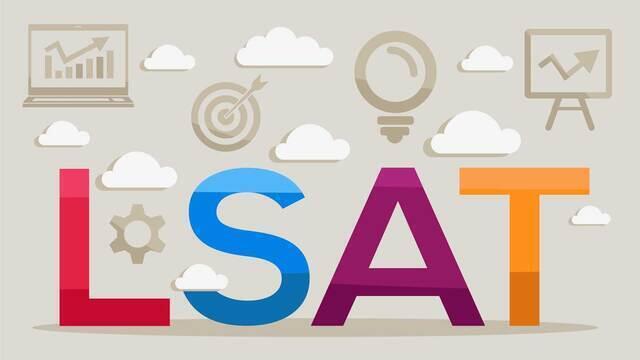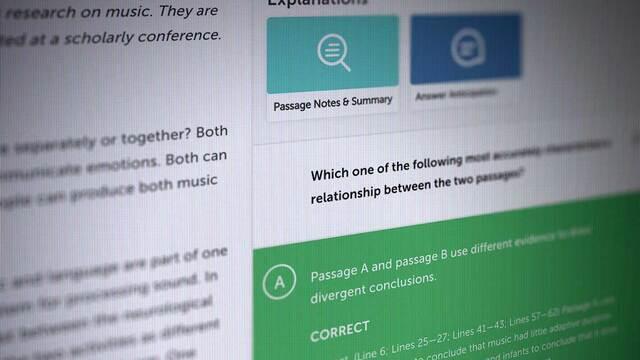In a recent post, we discussed how setting a target score can make your LSAT study process smoother, shorter, and more successful. But your target score can impact more than just your study process. It can also impact the strategy you use as you take the LSAT. One way your target score can affect your testing strategy revolves around what we’ll call “170-breaker” questions on the LSAT.
In this post, we’ll describe what 170-breaker questions are and how they can affect your testing strategy, whether your target score is above or below 170.
What’s a 170-Breaker Question?
Every LSAT has roughly 10-12 “170-breaker” questions.* These are the most difficult questions you’ll encounter on this test. And that’s not just a matter of, like, opinion. It’s a matter of objective, statistical fact. These questions produce the most incorrect responses among test-takers. These questions were designed to be tricky, inscrutable, disorienting, head-twisty, or just plain difficult.
Let’s get a little more specific. Prep Test 73 is publicly available on the free version of LawHub, so let’s talk about which questions are 170-breakers there. On the first Logical Reasoning section (Section 2), questions 12, 19, 20, 21, and 22 all qualify as “170-breakers.” On the Reading Comp section (Section 1), questions 6, 19, 21, and 27 earn a “170-breaker” designation. And on the Logic Games section (Section 3), questions 13 and 23 are “170-breakers.” Here’s question 21 from the LR section, if you want to see what a 170-breaker looks like.
Most of the students who took Spanish 101 at the university last semester attended every class session. However, each student who received a grade lower than B minus missed at least one class session.
Which one of the following statements about the students who took Spanish 101 at the university last semester can be properly inferred from the information above?
- At least some of the students who received a grade of A minus or higher attended every class session.
- Most, if not all, of the students who missed at least one class session received a grade lower than B minus.
- Most of the students received a grade higher than B minus.
- At least one student who received a grade of B minus or higher missed one or more class sessions.
- More than half of the students received a grade of B minus or higher.
[SPOILERS FOR THE ABOVE QUESTION LIE AHEAD]
The correct answer is (E) if you were curious.
[END OF SPOILERS]
True to name, you'll need to answer some of these "170-breaker" questions correctly to "break" the barrier of a 170 on the LSAT. These questions are designed to separate those who earn scores above a 170 and those who earn scores below a 170.** That's the harsh indifference of standardized testing for you. If you want to earn an elite score, you'll have to earn points on some questions almost everyone else answers incorrectly.
But here's what too many test-takers and instructors overlook when thinking about "170-breaker questions": they cut both ways. They present an opportunity for those who want to score above a 170 — an opportunity to prove themselves against the rest of the test-taking field. But they also present an opportunity for those who are not trying to score a 170 — an opportunity to save some time and boost their accuracy.
So, for the rest of the post, we'll discuss how to approach 170-breaker questions, both for those who set their target score at 170 or above and those who set their target below 170. Skip to whichever section is relevant to you. We'll start with the 170-targeters.
*10-12 170-breakers, assuming we're using the current 3-scored-sections version of the LSAT, as opposed to the discontinued 4-scored-sections version used from 1991-2020. The 4-scored-sections version of the LSAT will have about 12-16 170-breaker questions.
**OK, those psychometricians who design the LSAT would probably scoff at this explanation. More or less every question is designed to separate test-takers who earn one score from test-takers who earn another, higher score. In their science, there's nothing special about the score of 170. However, to our layman, base-10-thinking brains, 170 is a special score. It's a common "target score" among test-takers, and it's the minimum score that can get applicants considered for seats at the nation's top law schools. So, for the sake of simplicity and standard practice, we'll focus on the cut-off score of 170.
How to Approach 170-Breaker Questions When Your Target Score Is 170 OR ABOVE
Think of each LSAT question as a weight you have to lift. The easiest questions on the LSAT — those you answered correctly on your first LSAT — are pretty light. You can "lift" (answer) many of these questions without breaking a sweat. These questions don't really provide "exercise" (useful practice that can improve your test-taking skills) since you can already lift them easily.
The intermediate questions are a bit heavier. You can lift most of them. But maybe after lifting several of them in a row, you begin to get fatigued and struggle to lift more. Maybe a few of them are a bit too heavy for you right now, but you'll eventually be able to lift them after building your strength over a few weeks or months. These questions provide the most useful practice for you. You'll want to dedicate most of your exercise to these questions.***
170-breakers are, like, boulders. You probably won't be able to lift them until you've built your strength by lifting a lot of intermediate-sized rocks. If you try to lift them too early, you risk sustaining injury (such as confidence-shattering discouragement) that might take you out of the rock-lifting game for a bit.
So, you'll want to wait before you start practicing 170-breaker questions. Use the intermediate-level questions to build up your fundamental test-taking skills, refine your understanding of the various question types on the LSAT, and hone your approach to answering these questions. Once you're consistently answering those questions correctly at a rate that will allow you to earn your target score, you can try your hand at some 170-breakers. For example, the above question 21 from Section 2 of Prep Test 73 is a particularly challenging question that asks you to connect a "most" statement with an "if-then" statement. You'll need to learn the rules of how you can connect those types of statements before you have a shot at earning that 170-breaker point.
When you opt to begin practicing 170-breaker questions, it's a good idea to get repeated, targeted practice with these question types. The test-makers have a few tricks they love to employ to vault a question to the level of a 170-breaker. Seeing a lot of 170-breaker questions in a row can help you identify these tricks and learn how to avoid falling for them. Fortunately, LSATMax has many Office Hours sessions dedicated to 170-breaker questions, so you can learn how an expert-level LSAT instructor lifts these heavy boulders.
***Curiously, most LSAT prep programs will have you lifting the lightest rocks as you work through a course or textbook. Why is that? Well, if we're being generous, it's because they don't want to overwhelm any of their students. They want to show you how to apply their techniques to questions that won't confuse you. Then, you can apply those techniques to more challenging questions. If we're being less generous, it's because they're engaging in a bit of light deception. They want you to feel good while you're working through their course or textbook. So, they want to present easier questions they think you'll answer correctly. That way, they hope, you'll assume you're answering the questions correctly because of the program — and not because you'd answer those questions correctly even without their program.
How to Approach 170-Breaker Questions When Your Target Score Is BELOW 170
Skip them. End of story.
…
…
…
Oh, you're still here? Hmm, well, this feels a bit awkward, doesn't it? I feel like one of us should say something? OK then, let me expand upon the above advice.
You should skip and guess on any 170-breaker questions. There's always a chance a random guess will earn you a point. And if you want your guess to be slightly less than random, guessing (B) is a good option, as that answer choice has been slightly overrepresented as a correct answer on released LSATs.
Even if you guess incorrectly, skipping and guessing on these 170-breaker questions is still a smart strategy. The fact is, getting questions wrong quickly is a skill on the LSAT, especially if you're not aiming to earn a 98th percentile score. Everyone — those who are targeting scores above and below 170 alike — gets the same amount of time to complete a section. And every question — the normal and abnormally difficult 170-breaker questions alike — is worth just 1 point on your raw score. So, it's wise to dedicate your time to the questions you have the best chance of answering correctly. Why spend a lot of time on a question you'll probably answer incorrectly when you can dedicate that time to earning multiple points across several questions you probably will answer correctly?
Some people are really loath to take this strategy. Some people think of this strategy as akin to "quitting" on these difficult questions. We're taught that "quitting" is a moral failure. Others feel like skipping these questions is some sort of intellectual failure — an admission that they're not intelligent test-takers. But allocating your time to the questions most likely to yield you points doesn't prove that you're a quitter or unintelligent. Quite the opposite. It proves that you're smart enough to use your time wisely. And this approach ultimately allows you to attempt more questions, so it's hardly tantamount to quitting.****
The challenge of this strategy is that the LSAT won't make it obvious which questions are "170-breakers" on any given test. They're not labeled that way on the testing interface. But, you can find the 170-breakers by "feel." If a question "feels" abnormally difficult to you — whether its passage is super confusing, the correct answer is extremely difficult to anticipate, or the answer choices are indecipherable — cut bait as soon as you can. Recognize that the question is probably a 170-breaker question, select an answer choice as quickly as you can, and save time for the non-170-breakers.
****By the way, if you want the moral case for skipping, both law schools and legal professions want people who can use their time efficiently. Arguably, using your time wisely is an element of the LSAT that directly applies to life as a law student and attorney.









